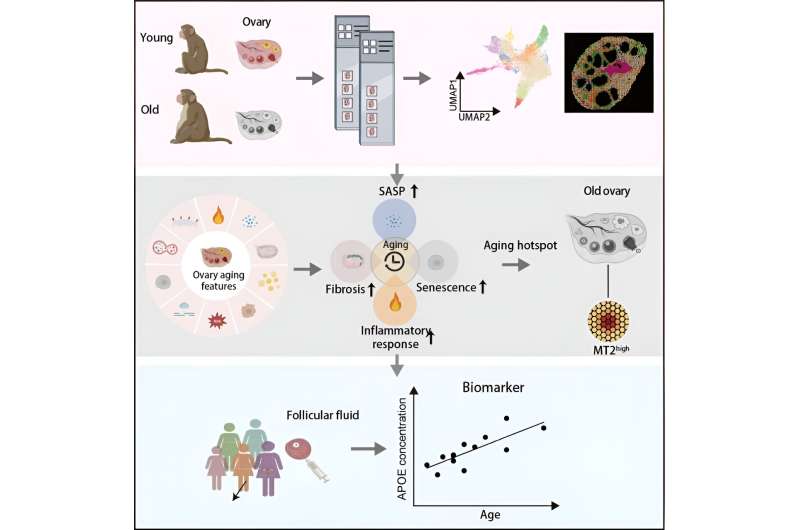
The ovary is an essential organ for female fertility, and its age-dependent decline in function is a major cause of infertility. However, the molecular mechanisms underlying ovarian aging are still not well understood, particularly in higher vertebrates like primates.
In their study, researchers used spatiotemporal transcriptomics to analyze the gene expression patterns in young and aged primate ovaries. The work, titled ” Aging hallmarks of the primate ovary revealed by spatiotemporal transcriptomics,” was published in Protein & Cell.
Key findings from the study include:
- Somatic cells in the non-follicle region of the ovary undergo more significant transcriptional changes with age compared to those in the follicle region, suggesting that this area may be more susceptible to aging and could contribute to a hostile microenvironment that accelerates ovarian aging.
- The study identified four primary contributors to ovarian aging (PCOA): inflammation, the senescent-associated secretory phenotype (SASP), cellular senescence, and fibrosis. These factors are likely to play crucial roles in the decline of ovarian function and fertility.
- Researchers discovered spatial co-localization between a PCOA-featured spot and an unappreciated MT2 (Metallothionein 2) highly expressing spot (MT2high). This area is characterized by high levels of inflammation and may act as an “aging hotspot” within the primate ovary.
- With advancing age, a subpopulation of MT2high cells accumulates, potentially spreading and amplifying senescent signals throughout the ovary.
This study provides the first comprehensive spatiotemporal transcriptomic atlas of the primate ovary, offering new insights into the molecular mechanisms underlying ovarian aging. These findings could lead to the identification of biomarkers and therapeutic targets for aging and age-related ovarian disorders, ultimately contributing to improved fertility treatments and interventions for women.
More information:
Huifen Lu et al, Aging hallmarks of the primate ovary revealed by spatiotemporal transcriptomics, Protein & Cell (2023). DOI: 10.1093/procel/pwad063
Provided by
Frontiers Journals
Citation:
Aging hallmarks of the primate ovary revealed by spatiotemporal transcriptomics (2024, April 19)
aging-hallmarks-primate-ovary-revealed.html
.
. The content is provided for information purposes only.
